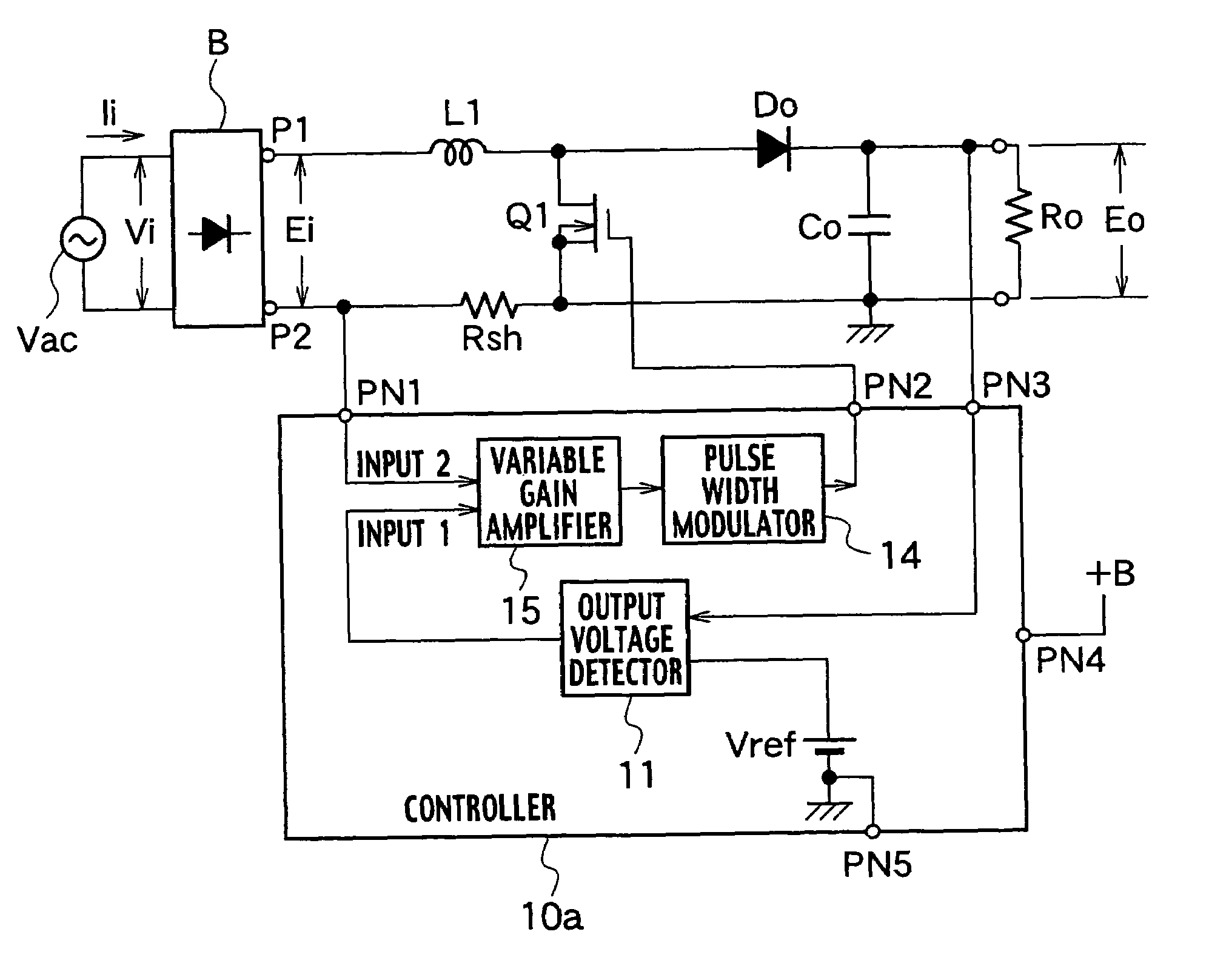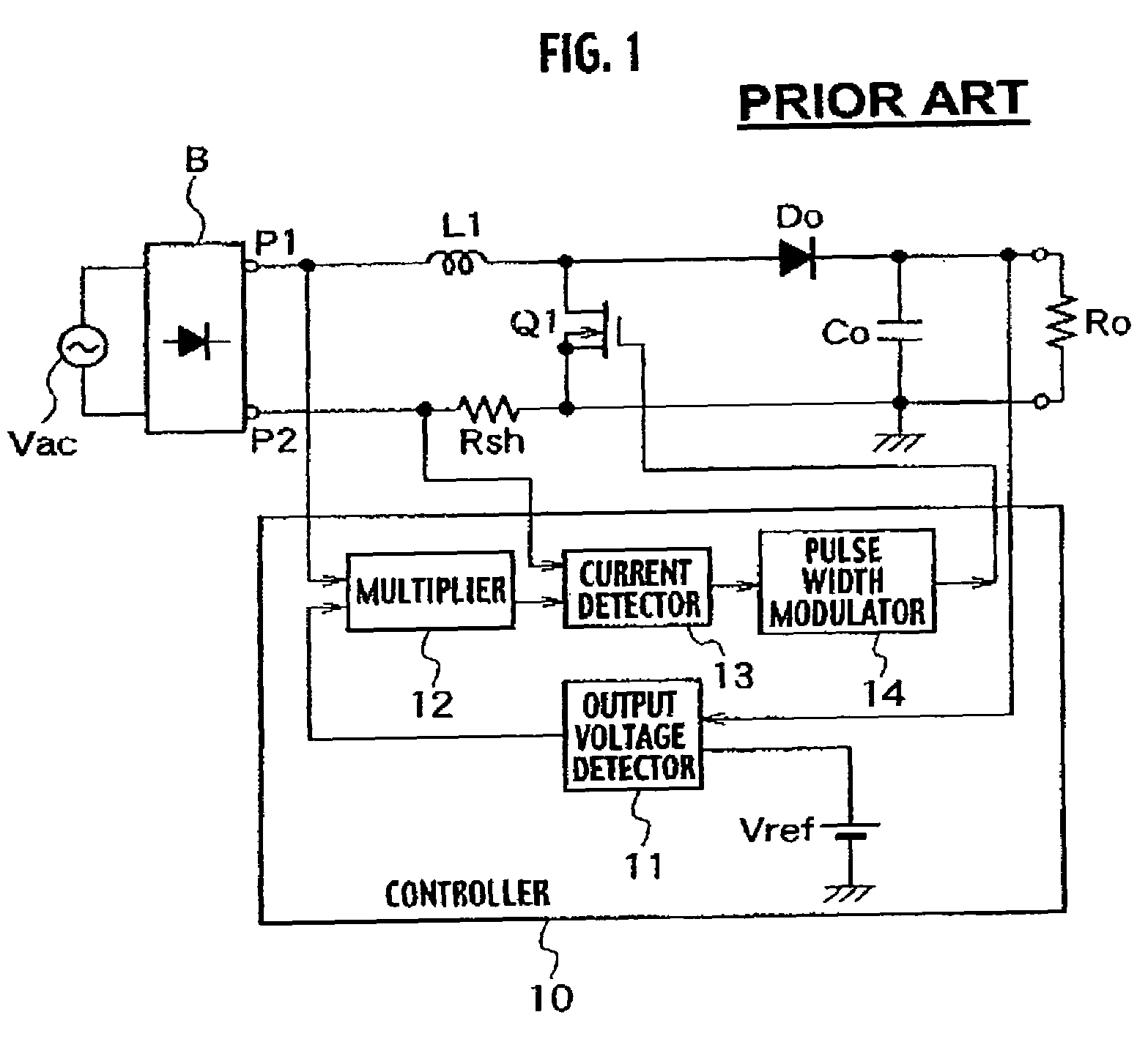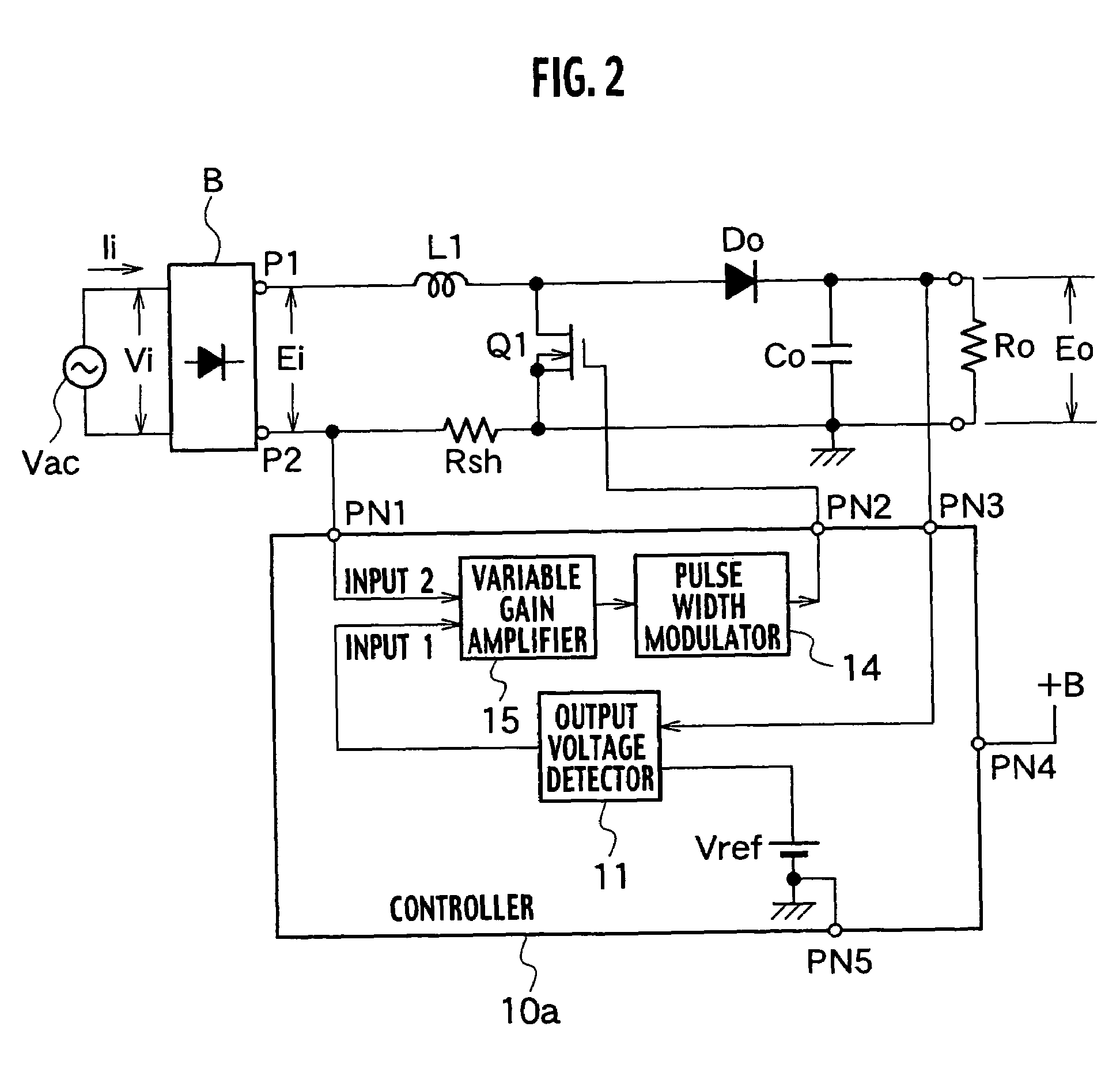Power factor improving circuit
a technology of power factor and improving circuit, which is applied in the direction of electric variable regulation, process and machine control, instruments, etc., can solve the problems of complicated circuit adjustment and difficulty in stably controlling the power factor improving circuit, and achieve the effect of simplifying the structure, reducing the number of circuit parts, and reducing the cost of power factor
- Summary
- Abstract
- Description
- Claims
- Application Information
AI Technical Summary
Benefits of technology
Problems solved by technology
Method used
Image
Examples
first embodiment
[0038]A power factor improving circuit according to the first embodiment shown in FIG. 2 is different from the conventional power factor improving circuit shown in FIG. 1 only in structure of a controller 10a.
[0039]Other structures shown in FIG. 2 are the same as those shown in FIG. 1. Like parts are designated with like reference numerals and detailed explanation thereof will be omitted.
[0040]The controller 10a includes an output voltage detector 11, a variable gain amplifier 15 and a pulse width modulator 14.
[0041]The output voltage detector 11 amplifies a difference between voltage of a smoothing capacitor Co and a reference voltage Vref, generates error voltage and output the same to the variable gain amplifier 15. The variable gain amplifier 15 varies a gain in accordance with a value of the error voltage from the output voltage detector 11, thereby amplifying the voltage which is proportional to the input current detected by the current detecting resistor Rsh, and outputs the...
second embodiment
[0060]FIG. 8 is a block diagram showing a power factor improving circuit according to a second embodiment. The second embodiment is different from the first embodiment shown in FIG. 2 in the current detector method of the input, and current conducting through the switch Q1 is detected in the second embodiment.
[0061]In the power factor improving circuit shown in FIG. 8, a series circuit comprising a step up reactor L1, a diode Do and a smoothing capacitor Co is connected to both output ends of a full-wave rectification circuit B which rectifies AC current of an AC power supply Vac. A load Ro is connected to both ends of the smoothing capacitor Co.
[0062]A controller 10b includes a switch Q1, a current detecting resistor Rsh, a peak detector 16, an operational amplifier 11 as an output voltage detector, a variable gain amplifier 15, and a pulse width modulator 14.
[0063]One end (drain) of the switch Q1 is connected to a connection between a step up reactor L1 and an anode of a diode Do ...
third embodiment
[0067]FIG. 9 is a block diagram showing a power factor improving circuit according to a third embodiment. The power factor improving circuit is applied to a converter which is so-called a choke converter. The third embodiment is different from the first embodiment in the structure of a rectification smoothing circuit connected to both ends of the switch Q1. The rectification smoothing circuit comprises a first series circuit including a diode Do and a capacitor Cx connected to both ends (between drain and source) of the switch Q1, and a second series circuit including a smoothing capacitor Co and a reactor Lo connected to both ends of the diode Do. A controller 10c is different from the controller 10a shown in FIG. 2 in that a negative pole of a reference voltage Vref is connected to an operational amplifier 11 as an output voltage detector, and a positive pole is grounded.
[0068]The power factor improving circuit according to this embodiment is also operated in the same manner as th...
PUM
 Login to View More
Login to View More Abstract
Description
Claims
Application Information
 Login to View More
Login to View More - R&D
- Intellectual Property
- Life Sciences
- Materials
- Tech Scout
- Unparalleled Data Quality
- Higher Quality Content
- 60% Fewer Hallucinations
Browse by: Latest US Patents, China's latest patents, Technical Efficacy Thesaurus, Application Domain, Technology Topic, Popular Technical Reports.
© 2025 PatSnap. All rights reserved.Legal|Privacy policy|Modern Slavery Act Transparency Statement|Sitemap|About US| Contact US: help@patsnap.com



